|
Case
study
1
The St. Vitus Day
Constitution, the supreme law of the
newly established Yugoslav state,
attracted much attention of its
contemporaries.1 This is best
illustrated by a number of
constitutional drafts political,
ethnic and religious opposition and
outstanding individuals had put
forward – in parallel with the
governmental draft – all of which
revealing the complexity of the then
state. Historians and law
theoreticians were deliberating the
Kingdom of Yugoslavia’s
specificities throughout its actual
lifetime; and it could be said that
the gist of most disputable issues
they raised outlived the Kingdom
itself. Holding diametrically
opposite views, law theoreticians
were arguing about major issues such
as legal impact of the Corfu
Declaration (1917); the Kingdom of
SCS’ continuity with the Kingdom of
Serbia; was it all about a new or an
old state; the legal impact of the
Corfu Declaration (1917), etc. Some
(Slobodan Jovanović) argued that it
was not legally a state, others
(Aleksandar Fira2) that is was.
However it was only in 1959 that the
first comprehensive study related to
the St. Vitus Day Constitution was
written (dissecting the situation
after Dec. 1, 1918; provisionality,
the election law, the rules and
regulations of the Provisional
People’s Representation,
parliamentary elections and the
balance of forces in the parliament,
governmental draft constitution and
other drafts, the manner in which
the Constitution was voted in, its
characteristics and impact on the
Kingdom’s political life, etc.) to
be published in 2011.3
South Slavs’ Unification Proclaimed:
December 1, 1918
The process of
rounding off the Yugoslav state
actually equaled “the simple
enlargement of Serbia.” By the
decision of the People’s Assembly
(November 25, 1918) in Novi Sad
Vojvodina was incorporated in to
Serbia. On November 26, 1918
Montenegro’s Big People’s Assembly
also decided to ally the country
with Serbia. Montenegrin King Nikola
Petrović was unthroned. And finally,
a delegation of Croatia’s People’s
Council came to Belgrade (November
27, 1918) to establish the State of
Slovenes, Croats and Serbs. As
previously agreed on, Regent
Alexander received the delegation
and listened to its “Address.” In
response, he proclaimed unification
of South Slavs into a single state.
The “Address”
emphasized that the People’s
Assembly had provisionally
established a state of Slovenes,
Croats and Serbs “willing to unite
with Serbia and Montenegro into a
single people’s state that would
encompass all the South Slavs’
territories.”4 The system of this
state, it said, would be left to the
Constituent Assembly to decide on,
and the latter would be elected “by
general, equal, direct and
proportional vote.”5 A provisional
parliament would be subsequently
formed to prepare a Constituent
Assembly. The provisional
arrangement would be limited in time
(to six months) and in its subject
matter (convening of the Constituent
Assembly and declaration of the
Constitution).
In his “Response”
to the “Address” the Regent said, “I
hereby proclaim the unification of
Serbia and the countries of the
independent state of Serbs, Croats
and Slovenes into the united Kingdom
of Serbs, Croats and Slovenes.”6
Whereas the form of the government
(monarchy or republic) in the back
seat in the Address, it is in the
front in the Response – and in the
favor of the monarchy. “All this,”
say law theoreticians, “is so
unusual that it questions the
existence of an earlier agreement.”
Actually, Serbia’s rulers have been
after, from the very beginning,
ensuring hegemony through a monarchy
and, then the King’s status.
However, unlike the speed needed to
round off the state’s territory,
consolidation of a monarchy – as a
form of government – called to time.
This is why the provisional
arrangement lasted two years instead
of the planned period of six months.
“The provisional arrangement tended
toward permanence of the
institutions favoring a monarchy,
unitarian and centralistic form of
governance and the position of the
executive power.”7 Besides, the army
was arranged as “a natural extension
of the old Serbian army.” “One of
the central government’s first legal
acts meant to harmonize regulations
in the entire territory was exactly
the one that legalized Serbia’s Law
on the Army in the whole country.”8
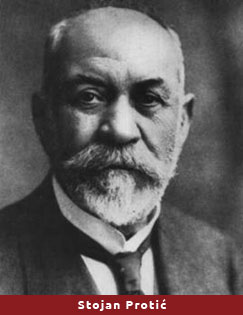 Soon after the act
of December 1 the first government
of the newly established state was
formed (Dec. 20, 1918). It was
chaired by Serbian politician Stojan
Protić, the leader of the People’s
Radical Party, the oldest one in
Serbia (1881/82). The government
decided on the state’s name (the
Kingdom of Serbs, Croats and
Slovenes) and its emblems. It
elected the Provisional People’s
Representation tasked with preparing
the terrain for the Constituent
Assembly. Soon after the act
of December 1 the first government
of the newly established state was
formed (Dec. 20, 1918). It was
chaired by Serbian politician Stojan
Protić, the leader of the People’s
Radical Party, the oldest one in
Serbia (1881/82). The government
decided on the state’s name (the
Kingdom of Serbs, Croats and
Slovenes) and its emblems. It
elected the Provisional People’s
Representation tasked with preparing
the terrain for the Constituent
Assembly.
Characteristic of
the domestic situation of the newly
formed state were: farmers’
movements protesting against the
unsettled agrarian issue; and,
socioeconomic protests in the
aftermath of the war and under the
influence of the Russian revolution.
This complexity – quite unexpectedly
to the ruling class – manifested
itself in the first elections
(municipal elections in 1920) in
which communists scored considerable
success. The apparatus responded
with repression (Obznana/Declaration
of December 29, 1920).
Against the
above-mentioned socioeconomic
context and the aspiration toward a
monarchy, and after two years of
“hard bargaining” the Provisional
People’s Council passed the Election
Law (Sept. 3, 1920). Two of its
provisions provoked fierce debates
and imbued political relations with
lasting mistrust. The Article 1
invested the King with the right to
dissolve the Constituent Assembly
before declaration of the
Constitution. Besides, the Election
Law provided adoption of provisional
rules and regulations of the
Constituent Assembly obliging MPs to
pledge loyalty to the King at the
very start. This, though justified
by the necessity of ending up
provisional arrangement and
declaring the Constitution, caused
strong criticism both in the
parliament and the public and sowed
the seed of mistrust in political
relations of the heterogeneous state
as the Kingdom of Serbs, Croats and
Slovenes. Slobodan Jovanović himself
admitted, “Both the Election Law and
provisional rules and regulations
were after depriving the Constituent
Assembly of its sovereign
character.”9 And, Aleksandar Fira,
having analyzed the process,
concluded with good reason that the
two documents other, new links will
only tie up with.
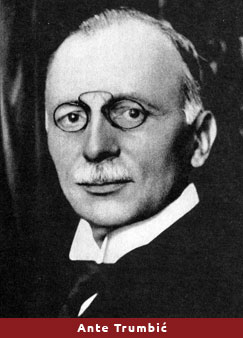 Even more divided
was the parliament and general
public over the Election Law’s
provision on the absolute majority
needed to adopt the Constitution.
Considering the Corfu Declaration
(July 20, 1927) Nikola Pašić and Dr.
Ante Trumbić had signed on behalf of
the Kingdom’s government and the
Yugoslav Committee respectively,
many politicians saw the provision
as departure from the compromise and
the issue of the state’s system left
to the balance of forces – which the
latter was. Confirming the will of
all the three nations to unite in a
single state, their representatives
had agreed that it should be “a
unique, constitutional and
parliamentary monarchy under the
crown of the Karađorđević dynasty.”
They also agreed at the time that
the parliament would be elected by
general, equal and indirect vote of
“the qualified majority ensured
against any majorization.” The said
majority should not be “tribal” but
just numerical.10 Even more divided
was the parliament and general
public over the Election Law’s
provision on the absolute majority
needed to adopt the Constitution.
Considering the Corfu Declaration
(July 20, 1927) Nikola Pašić and Dr.
Ante Trumbić had signed on behalf of
the Kingdom’s government and the
Yugoslav Committee respectively,
many politicians saw the provision
as departure from the compromise and
the issue of the state’s system left
to the balance of forces – which the
latter was. Confirming the will of
all the three nations to unite in a
single state, their representatives
had agreed that it should be “a
unique, constitutional and
parliamentary monarchy under the
crown of the Karađorđević dynasty.”
They also agreed at the time that
the parliament would be elected by
general, equal and indirect vote of
“the qualified majority ensured
against any majorization.” The said
majority should not be “tribal” but
just numerical.10
Law theoreticians,
historians and politicians argued
that the Corfu Declaration was not a
legal document and, therefore, not
mandatory: because, they said, the
royal government’s and the Yugoslav
Committee’s representatives as
negotiators at the Corfu conference
that resulted in the Declaration,
had not stood for two sides equally
qualified – in legal terms – for
signing bilateral agreements. And
the Election Law formally rested on
this. The Corfu Declaration’s moral
and political significance meant not
that the signatories were duty-bound
by it.
What was it that the elections for
the Constituent Assembly revealed?
The elections for
the Constituent Assembly were held
on November 28, 1920. The electorate
amounted to 2,480,623 voters; 1,
664,265 or 64.95% cast their vote
for 419 MPs.
The Democratic
Party (established in 1919) won the
biggest number of votes – 319,448
and gained 92 parliamentary seats.
The second on the list was the
oldest of Serbia’s
parliamentarianism, the People’s
Radical Party, with 151,603 votes
and 39 seats; the Slovenian People’s
Party led by Dr. Anton Korošec got
112,274 votes and 27 seats, the
Social Democratic Party won 46,792
votes and 16 seats, the Croatian
Peasants’ Party (People’s Front)
38,400/7, the Croatian Community
38,400/7, the National Turkish
Organization 30,029/8, the
Republican Party 18,136/3, and the
Croatian Party of Rights 10,600
votes and 2 seats.
The outcome of the
elections demonstrated: the
electorate scattered into 22
parties; rise of communists and the
anti-monarchic bloc (Stjepan Radić’s
Republicans); and parliamentary
seats won by parties that were
either national or religious in
character. Though the ruling class
claimed that it rested on the unity
of three nations, the new state
turned out as dramatically
composite. Bearing in mind a complex
picture as such saying that the
elections for the Constituent
Assembly were relatively free when
compared with all earlier elections
in the Kingdom would not be a
paradox.
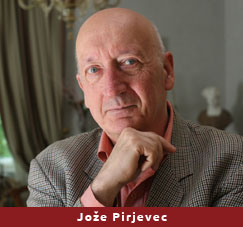 Nothing signaled
the state’s consolidation even once
the provisional arrangement was
over. Slovenian historian Jože
Pirjavec, the author of one of the
best histories of Yugoslavia –
analyzing it, among other things
from the angle of the reports by
foreign diplomats assigned to the
Kingdom – quotes one of the most
moderate Serbian politicians of the
time, Dragoljub Jovanović, saying
after the September 1927 elections
(and on the eve of dramatic
developments in 1928-29), “The
Parliament is a circus, comedy rules
and the state is a madhouse.”11 Nothing signaled
the state’s consolidation even once
the provisional arrangement was
over. Slovenian historian Jože
Pirjavec, the author of one of the
best histories of Yugoslavia –
analyzing it, among other things
from the angle of the reports by
foreign diplomats assigned to the
Kingdom – quotes one of the most
moderate Serbian politicians of the
time, Dragoljub Jovanović, saying
after the September 1927 elections
(and on the eve of dramatic
developments in 1928-29), “The
Parliament is a circus, comedy rules
and the state is a madhouse.”11
Terror became the
government’s modus operandi and
behind it was the King. In response
to social tensions communists were
outlawed; and Croatian MPs were
killed in the midst of the National
Assembly and subsequently latent
dictatorship shifted to an open one
in response to national differences.
Was such turn of events really
unavoidable?
The public had
mixed feelings about the first
constitutive session of the
Constituent Assembly (December 23,
1921) boycotted by MPs from the
Croatian Republican Farmers’ Party.
To those enthusiastic about it, that
was a historical day. Others were
anxious about what could come next.
An anonymous commentator for
Belgrade’s “Thought” magazine noted,
“The trouble with composition of the
parliament as such is not only in
partisan division and hatred, but
even more in basic political trends
and antipodal stands about the new
state.”12
Regent Alexander
delivered his Address to the third
parliamentary session in a row.
Though treated as usual courtesy,
the Address was timed to attain a
fixed goal: to “confirm procedurally
the non-sovereign character of the
Constituent Assembly, as an assembly
of monarchistically organized
state.”13
Method adjusted to the goal aspired
The ratio of
parliamentary caucuses – significant
for adoption of the Constitution –
changed in the Constituent Assembly.
This relates to those formed by the
Farmers’ Alliance, the Yugoslav
Muslim Organization and Jamieth.14
Because of the growing terror MPs
from the Communist Party walked out
on the parliament. For other reasons
such as the centralistic-unitarian
system in the state MPs from the
Yugoslav Club did the same. MPs from
the Croatian Farmers’ Party had
already left the parliament while
MPs from the People’s Club refrained
from voting.
The ruling
Democratic-Radical coalition did its
best to enlarge the parliamentary
bloc willing to vote in the draft
Constitution. It made an agreement
with a faction of the Farmers’
Alliance and MPs of the Yugoslav
Muslim Organization, remunerating
the latter considerably. “Various
means were used to win over MPs for
the Constitution, from pressure to
bribes given to individuals and
groups as in the case of Jamieth or
the Muslim caucus from South Serbia
the members of which, bribed on the
eve of voting, voted in the
Constitution,” says historian Branko
Petranović.15
In a variety of
ways “devoid” of any alternative
solution to the statehood issue and
insured by the parliamentary rules
and regulations that it could impose
its solution on the rest, the ruling
coalition was trying – though it
needed not voting to secure
legitimacy – to ensure strong
partisan support. All in all, 258
MPs cast their vote for the
Constitution: 223 voted for it and
35 against (89 MPs from the
Democratic Party, 87 Radicals, and
the rest from the Farmers’ Alliance,
the Yugoslav Muslim Organization,
Janieth, the Farmers’ Party and MP
Spasoje Piletić said “yes.”).16
What deprived the
Kingdom of Serbs, Croats and
Slovenes of legitimacy was, above
all, the manner in which its first,
highest law was voted in. The public
saw this procedure no less important
than contents of constitutional
provisions. After all, denial of
qualified majority crucially
determined social and national
structure of the parliament and made
majorization possible. And yet,
almost the same could be said about
the work on the St. Vitus
Constitution and the elections for
the Constituent Assembly: it was
relatively independent from the
goals of the ruling majority. Along
with the governmental draft, scores
of other drafts had been developed
that contributed to jurisprudence
and alerted of the state’s
historical complexities that, as it
turned out later, could not have
been overcome either by the number
of the living or the dead; and even
less by force.
The government’s draft Constitution
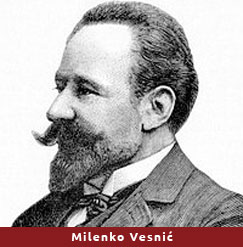 It was Milenko
Vesnić’s cabinet that – after
several attempts – developed the
draft Constitution. However, since
his cabinet resigned shortly after
the elections, the King entrusted a
slightly amended draft to Nikola
Pašić, the politician with biggest
experience and international repute,
whom he invested with premiership. It was Milenko
Vesnić’s cabinet that – after
several attempts – developed the
draft Constitution. However, since
his cabinet resigned shortly after
the elections, the King entrusted a
slightly amended draft to Nikola
Pašić, the politician with biggest
experience and international repute,
whom he invested with premiership.
All parliamentary
caucuses were most interested in the
draft that, at the same time,
triggered off debates in political
and academic circles. What was most
characteristic of these debates were
deep differences in stands the
elections for the Constituent
Assembly had already hinted at: and
swords were crossed over certain
provisions as well as the draft as a
whole.17
Under general
provisions of the governmental draft
the Kingdom was defined as
constitutional, parliamentary and
hereditary monarchy throned by the
Karađorđević dynasty. Other
provisions can be classified in two
groups.
Loose provisions
on civil rights make up one group.
The authors and interpreters of
these provisions were praising them
as modern and liberal, and above all
influenced by Europe’s theories of
solidarity at the time, and then by
the 1903 Constitution of the Kingdom
of Serbia, a replica of the 1888
Constitution by which Serbia, like
many other Balkan countries, looked
up to Belgium’s liberal
constitution; and, finally, under
the influence of the Weimar
Constitution.
The draft’s
section on civic right provided that
all citizens shall be equal before
the law; no one shall be taken
accountable or criminally punished
for anything that is not a crime.
Further on, it provided with certain
limitations that private property
was inviolable. It banished feudal
relations. It guarantees the freedom
of conscience and religion (all
acknowledged religions were equal).
It regulated the freedom of press
(censorship can be imposed only at
wartime). It warrants the freedom of
assembly and association. It
proclaimed obligatory, general and
free education; it placed private
schools under the state’s control.
The provisions in
the second group were adjusted to
what a large, unified state would
want for itself (regulating the
administration, the position of the
King, the parliament, the executive
branch the judiciary). Despite all
the three branches of the government
the King was “a constant in all the
three,” whereas other bodies were
just ‘cooperating’ with him.18 Both
sections of the governmental draft
ensured ‘pan-Serbian hegemony” in
two ways: through the position of
the King and organization of the
executive branch.
Invested with
absolute power the King was
relativizing the parliament. He was
declaring it open and closed, and
was entitled to dismiss it. He was
proclaiming laws the People’s
Representation had passed. He was
granting amnesties and pardons. He
was the supreme commander and
represented the country
internationally. He was untouchable
and unaccountable to anyone; unlike
the rest he was considered of age
when turning 18.
He was the pillar
of the judiciary and he was the
pillar of the executive branch. He
was the one to appoint ministers and
approve high officials. His position
embodied the above-mentioned
hegemony that implied strongly
centralized government. And this, in
order to have historical autonomies
bypassed, was divided into
districts, counties and
municipalities. Initially, 600,000
inhabitants made up a district; the
figure in the last of the drafts
grew to 800,000.
The drafts the
opposition and individuals submitted
differed from the governmental one,
especially those developed by
political and academic elites.
Paraphrased in the works of Slobodan
Jovanović and Aleksandar Fira, the
latter drafts perfectly testify of
the new state’s manifold complexity
manifested as early as in the
elections for the Constituent
Assembly. Under such circumstances
any imposed constitution had to be,
in historical perspective, just
temporary. Tradition but also modern
constitutionality was calling for
compromise, especially in
governmental functioning.
Alternative drafts were alerting
farsightedly against far-reaching
consequences of no compromise. And
so, the Yugoslav Club – speaking on
behalf of ‘all Slovenes’ -
predicted:
“Should the
Constitution be declared against the
will of the majority of Slovenes and
Croats that would be an assault
against popular unity that would
eventually destroy the state.
Imposition as such would not put an
end to constitutional struggle but
start it. This is why provinces with
their historical tradition and
social and economic specificities
should not be banished with decrees.
A necessary autonomy means
consequent self-government within a
province, and in accordance with
acknowledged principles of
parliamentarianism, which should
permeate the entire system, from top
to bottom…“19 (L.P. emphasis)
Partisan draft constitutions
What fundamentally
differed partisan drafts from the
governmental one was the type of
governance (monarchy or republic)
and the way in which the state was
organized (centralism vs.
decentralization in a federal or
confederal form). While some
advocates for a monarchy also
advocated decentralization, other
monarchists were calling for
centralization; and, unlike these
two, was the draft of the Serbian
republican group and socialist
Nedeljko Divac.
Two parties were
standing for a parliamentary
monarchy arranged close to
federalism: Croatia’s People’s Club
and Slovenia’s Yugoslav Community.
Though not
represented in the Constituent
Assembly, the Croatian Republican
Party came public with a draft
constitution of its own. It
emphasized that the three nations
were similar, and that Croats were
not a tribe but a nation;
consequently, it called for a
confederation of “relatively loose
ties between member-states.”
The Farmers’
Alliance’s draft called for a
centralistic monarchy, while the
Communist Party wished to see
Yugoslavia as “a Soviet republic.”
Republican draft constitution
Diametrically
opposite to “monarchist” drafts
(either in a centralized or federal
state) was the Republican draft.
Though the party itself had a few
MPs its draft is significant because
of the principles it stood for.
Quite
uncharacteristic of the “tradition
and historical moment” the
Republicans were saying, “We take
that people’s unity can be in a
republic only, and that in a
republic only could citizens’
freedoms and rights be protected, as
big as possible social equality
attained, people freed from
unnecessary tutelage of the
administration, and parliamentary
flaws that have become dangerous to
people’s social welfare removed.
Only a republic could guarantee
people their peace of mind,
strengthen their civic activism,
inspire their humane and moral
feelings, soothe the class struggle
the monarchy has been constantly
fueling, and capacitate the nation
for keeping its head over the water
of the big international game.”20
Independent drafts by non-partisan
figures
Out of many drafts
those developed by non-partisan
figures attracted much public
interest; and for two reasons – all
those figures were authorities and
after a compromise between a
monarchy and a decentralized state.
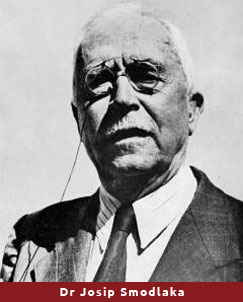 Well-known
Dalmatian politician Dr. Josip
Smodlaka said, “The whole
constitutional issue is about
finding a golden mean between state
interests and ideal freedoms.”21 In
his opinion, the country should be
divided into twelveThe St. Vitus Day Constitution of June 29, 1921, Yugoslavia’s First Constitution: The Unitarian-Centralistic Concept Wins against the Concept for a Complex Statee Jugoslav Committee did
not submit any draft but, long
before the Constituent Assembly,
suggested strong local
self-governments as the means for a
compromise between unitarianism and
federalism. A Unitarian himself, he
thus came closer to the ruling
majority although insisting that
principles should respected or else
in jeopardy. Well-known
Dalmatian politician Dr. Josip
Smodlaka said, “The whole
constitutional issue is about
finding a golden mean between state
interests and ideal freedoms.”21 In
his opinion, the country should be
divided into twelveThe St. Vitus Day Constitution of June 29, 1921, Yugoslavia’s First Constitution: The Unitarian-Centralistic Concept Wins against the Concept for a Complex Statee Jugoslav Committee did
not submit any draft but, long
before the Constituent Assembly,
suggested strong local
self-governments as the means for a
compromise between unitarianism and
federalism. A Unitarian himself, he
thus came closer to the ruling
majority although insisting that
principles should respected or else
in jeopardy.
Along with the one
submitted by the republican bloc
(communists, social-democrats and
republicans) Stojan Protić’s draft
added to more liberal views on the
state issue.22 His draft defined the
Kingdom of Serbs, Croats and
Slovenes as a hereditary and
parliamentary monarchy throned by
the Karađorđević dynasty; the
territory was divided into
provinces, districts and counties.
His draft was after a compromise
between Serbs and Croats that would
invest the unique state with a
democratic character. Nevertheless,
the general public was more
sensitized to these questions during
a polemic between himself, trying to
secure unity in diversity through
provinces that would not be federal
units, and Nikola Pašić, advocating
pure centralism.
Historians and law
theoreticians recognized relative
liberalism of St. Vitus
Constitution’s provisions on social
rights and civic freedoms, but not
all of them the extent to which the
practice relativized this
liberalism; and even more how much
was Serbia’s hegemony secured by the
King’s absolute power. The masked
dictatorship was tending towards
open one, and centralism, as a key
element of unity, was fermenting its
disintegration.
|